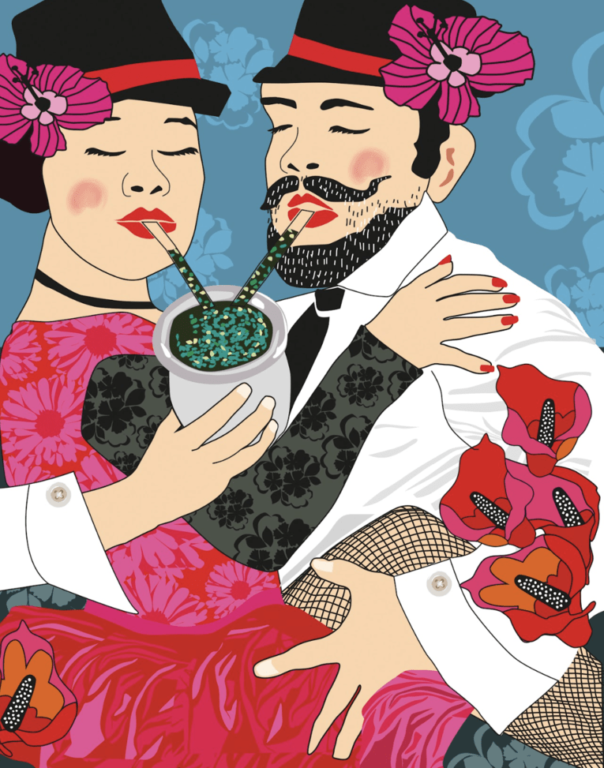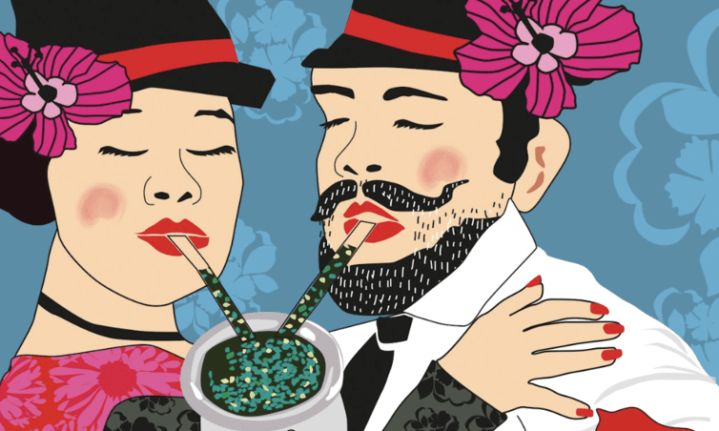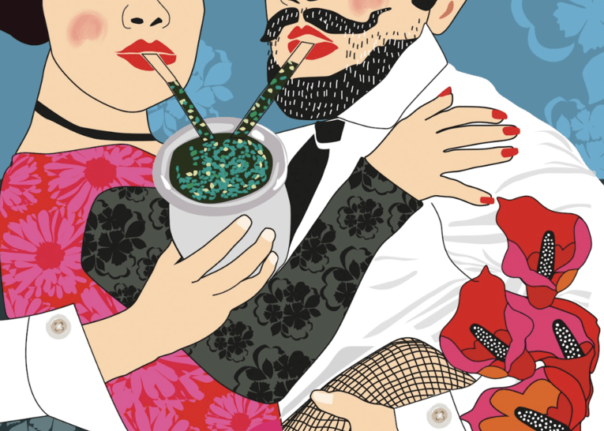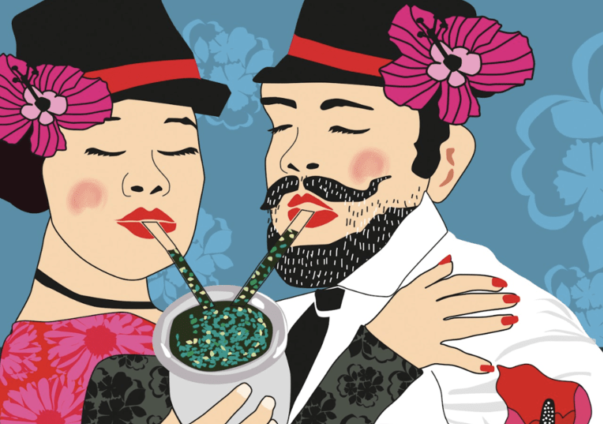Montevideanos are obsessed with tea. No, not rooibos, but a bitter concoction called yerba maté (ma-tay).
Picture a business man clutching a thermos under his arm while sipping through a silver straw, known as a bombilla, out of a gourd of sorts. It’s not some New Age fad or health kick, it’s been in vogue forever.
Even a march down Agenda 18 de Julio by trade unions included the obligatory carrying of the flask of hot tea with a smell reminiscent of good old daggapitjies (of which there were none in sight, I might add). A far cry from toyi-toying.
A mini-Buenos Aires, Montevideo is not, contrary to popular belief.
In 2000, a reporter for The Washington Post rounded up a string of misleading assessments of the Uruguayan capital. He’d heard the metro described as a ‘dump’, ‘the Newark of Buenos Aires’ and as the ‘Cleveland of South America’ (in contrast with the Buenos Aires moniker, “Paris of the South”).
Lonely Planet, he pointed out, had described the city’s architecture as ‘worn-out’ and ‘not out of place in Eastern Europe’.
Perhaps such old-fashioned assessments were down to the nation’s notably contrarian attitude, the way it stood out as a brazenly socialist state – and a tiny one at that – in a sea of fiercely capitalist neighbours.
Whatever one says about the city’s architecture and upkeep, it’s also a city with wide, tree-lined avenues, warm-hearted people, succulent steaks and serious red wine.
In any case, since Lonely Planet’s unflattering prognosis, life has improved significantly in Uruguay. According to the World Bank, between 2006 and 2016 moderate poverty in the country fell from 32.5% to 9.4%, while extreme poverty went from 2.5% to a near non-existent 0.2 %.
Montevideo – the poor man’s Barcelona – is a city that resembles a car museum. Brightly painted jalopies and polished pick-up trucks drive alongside horse carts. An American journalist once remarked: ‘Too proud to buy affordable new cars from neighbouring countries, too broke to import them from overseas.’ What it does is add to the charm of the place and gives it a Cuban feel.

Illustration by Jess Nicholson
Spending a day at the antique market is a different cup of tea (or maté) altogether.
Judging by their moustachioed appearance, many of the men could have been Afrikaans oomies. They displayed the same plattelandse warmth and conviviality. I lost count of how many times I heard ‘Gracias a chi’ – when you thank them, they reply by thanking you instead.
Set up on Plaza Matriz in Ciudad Vieja (Old Town), the Sunday antique market sells old silver, collectable corkscrews, elegant carafes and finely cut crystals, once part of the French chandeliers from the heyday of Uruguay – after World War II many emigrants from Europe came here.
A live Latin American band tinkled in the background while I wandered from table to table under shady trees casting dappled shadows.
Some of the stall holders spontaneously tangoed (yes, while Buenos Aires gets all the tango attention, Montevideanos are even more crazy about the dance and Uruguay has produced some of its greatest songs and crooners). I got so carried away, I landed up having a late lunch at a pavement table at La Corte, where George Bush lunched when he visited the city.
I followed it up with a medio y medio, a Uruguayan cocktail of dry white wine and sweet sparkling wine, at Café Roldós, a bar-cafe that has been trading since 1886 and is still a favourite hangout of Montevideanos.
At 11, I trudged home, all my shopping in a large transparent streepsak of sorts, slung over my shoulder a lá Santa Claus.
Going up 18 de Julio, at the second last square from my temporary abode, I chanced upon geriatrics tangoing to their hearts’ content – sissie that I am, I watched them with tears streaming down my face.
At the next square there was live music by local artist Rossana Taddei. Much later, Santa Clausina was on her way again, only to be halted in her tracks by a lime green 1950s Ford resplendent in its restoration. It’s a miracle I got any sleep at all that night.
Cows supposedly outnumber people four to one in Uruguay. To aid a more equitable distribution, I took myself off to a nondescript, quirky neighbourhood parrillada (steak house) on a cold, potentially miserable Friday.
At Euskal Erria I opted for a table at the window overlooking a shiny wet road. Outside there was a soft drizzle. Street lamps reflected a yellowish glow. Horse carts clip-clopped past; occasionally entire families rummaged through dust bins to find anything remotely recyclable.
The most popular cut of beef in Uruguay is vacío, slightly stringy but very juicy. With a carafe of house red it went down a treat.
After a month in this part of South America I hadn’t managed to acquire a taste for yerba maté, and so I endeavoured one last time.
Sipping the strong, earthy, bitter brew that smells of eucalyptus, and trying not to offend the waiter by screwing up my face too much, it dawned on me: Montevideo as a destination – and the Montevideanos as a people – resemble the flavour profile of maté. It takes some getting used to, some time to develop a “maté palate”, but once you get it, it stays with you.
Meeting Uruguayans as I went about the city also took some getting used to. Although they are friendly and easygoing once you have established some interaction, life has seldom been easy for these people. They have lived through a military takeover or two, and are constantly in the shadow of a regional superpower in the form of Argentina. While the economy is flourishing today, there’ve been significant upheavals over the years – which means there’s a ruggedness, a protective shield that needs to be broken through.
Once they get to know you, though, they will go out of their way to make you feel welcome. And that invariably means offering you some of their homebrew.
Whereas you may acquire the taste of maté, the people of Montevideo will definitely grow on you. Provided you never negatively compare Uruguay to Argentina, or Montevideo to Buenos Aires, even as a joke. Or insult the national football team. Such slurs on the dignity of a proudly unique people will not go down well. Even if, on your second gourd of maté, you’ve acquired a taste for it.
By Ilse Zietsman
Illustration by Jess Nicholson




















